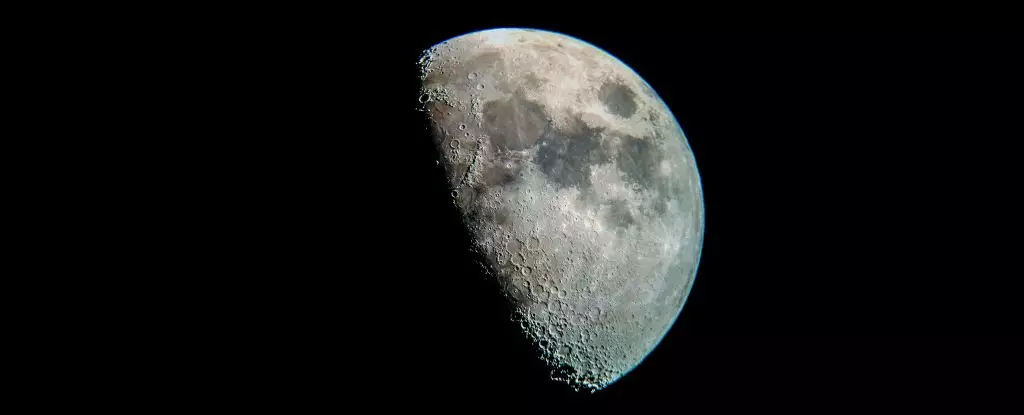The Moon has long captivated humanity, serving as a symbol in art, mythology, and science. Despite our longstanding fascination, the Moon’s fundamental structure has remained elusive, leading to numerous hypotheses about its composition and the history it harbors. Recent research, however, has illuminated our understanding of the Moon’s internal composition, particularly concerning its inner core. A study released in May 2023 provides definitive insights, establishing that the Moon’s core is a solid body similar in density to iron, challenging previous notions and contributing to a broader understanding of lunar and solar system evolution.
For centuries, one whimsical theory posited that the Moon was composed of green cheese. While that notion has been thoroughly debunked, the question of what lies beneath the Moon’s crust has persisted. Various scientific investigations have sought to explore the Moon’s core, theorizing whether it possesses a solid core, a molten state, or a combination of both. This uncertainty has profound implications for our understanding of the Moon’s formation, geological activity, and even its magnetic history.
The revelation of a solid inner core comes from the meticulous work of an international team, headed by astronomer Arthur Briaud from the French National Centre for Scientific Research. Their findings not only clarify the Moon’s internal structure but also harness the power of seismic data to decipher its evolution. This comprehensive approach shows how critical our technological advancements and data collection methods are in solving cosmic puzzles.
The study harnessed seismic data, which has proven to be the most effective method for assessing planetary interiors. By analyzing how seismic waves propagate through celestial bodies, scientists can construct detailed models of their internal formations. The Apollo missions provided a wealth of seismic information; however, the data consisted of insufficient resolution to definitively ascertain the state of the Moon’s core. The research team adeptly employed lunar laser-ranging experiments alongside data from contemporary space missions, thus enhancing the resolution and depth of their analysis.
Their approach involved evaluating the Moon’s physical characteristics, such as its gravitational interplay with Earth, torsional deformations, and variations in density. Through rigorous modeling, they compared these observations against various core configurations. The findings were striking: the inner core is solid, resembling Earth’s core in structure, comprises a liquid outer layer, and shares similarity in density.
Understanding that the Moon has a solid inner core reshapes our perspective on its magnetism. The Moon was once enveloped in a significant magnetic field, which began to wane approximately 3.2 billion years ago. This magnetic field is intrinsically linked to the dynamic processes within the core, specifically convection and movement. The revelation of a solid core may explain the moon’s magnetic evolution and provides critical context for geological activity assessed in past missions and ongoing lunar research.
The modeling suggests that the lunar core contains an outer fluid layer approximately 362 kilometers in radius, with a solid inner core measuring about 258 kilometers. The density of the inner core calculates to about 7,822 kilograms per cubic meter, closely mirroring the density of terrestrial iron. This parallel not only enhances our understanding of the Moon’s composition but also emphasizes its geological links to Earth.
The implications of these findings extend beyond the Moon itself, contributing to the narrative of the early Solar System. The evidence for mantle dynamics within the Moon implies active geological history which may align with models of planetary evolution during the Solar System’s formative years. It sheds light on the Moon’s volcanic activity and the essential processes that shaped its surface.
Furthermore, the study corroborates earlier research from 2011 led by NASA’s Renee Weber, reinforcing the authenticity of the findings and establishing a stronger case for the Moon’s Earth-like core. Such confirmations are pivotal; they weave together disparate threads of lunar research into a cohesive understanding that fosters further exploration.
As humanity prepares for renewed lunar exploration, with plans for returning to the Moon on the horizon, these revelations encourage optimism. Future missions may soon provide seismic validation for these findings, deepening our comprehension of not only the Moon but of planetary formation phenomena across our cosmic neighborhood.
In essence, the Moon’s once-mysterious interior is gradually revealing its secrets. Through careful investigation, we shift from whimsical speculation to a grounded understanding of our celestial neighbor, aligning with the timeless human quest for knowledge and exploration.


Leave a Reply